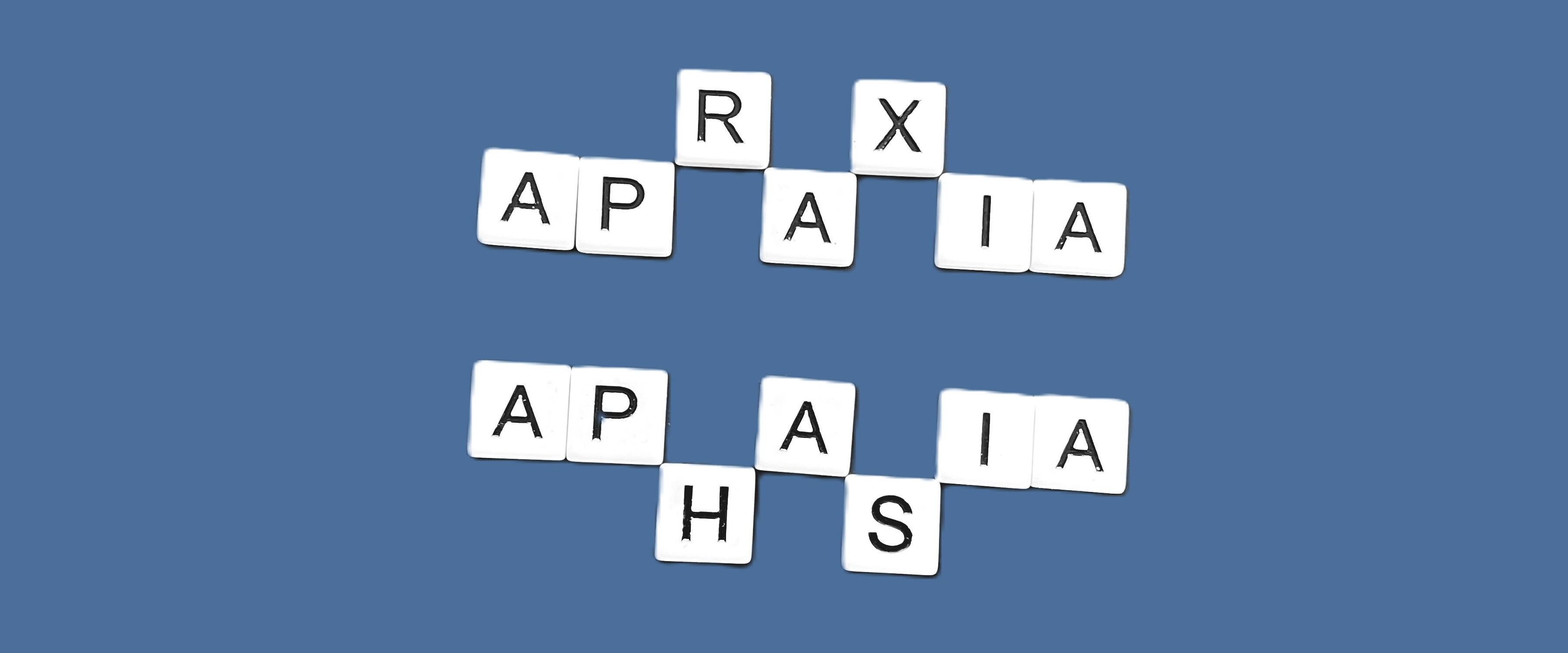
“Aphasia” and “apraxia” can be easily confused. After all, they sound alike and look alike. While they have some similarities, they’re different disorders. Here are the important facts to know:
1. You can have aphasia with or without apraxia, but if you have apraxia, you also have aphasia. Both are caused by brain damage from a stroke or brain injury to the left side of the brain. Aphasia and apraxia can overlap if the same area of the brain is damaged.
2. Apraxia comes from damage to a very small and specific part of the brain called Broca’s area. This area of the brain converts the words you think into spoken language. This area is pretty close to the areas that control the movements of the right side of the body, so often you’ll see apraxia accompanied by severe arm and leg weakness. Aphasia can result from a large or small area of brain damage. Aphasia affects language processing and expression–understanding, reading, writing, and speaking.
3. Apraxia affects motor speech control, so it’s hard to make speech sounds accurately on purpose. Moving your lips, tongue, jaw and voice is coordinated to make each sound, which then forms spoken words. To say the word ‘cat’--you have to make each sound (‘k’, ‘a’, ‘t’) and put them together quickly. Each sound has different movements and timing to make it sound right when put together. Aphasia affects your ability to retrieve words or understand words to communicate.
4. There are different profiles and severities of apraxia, with different strengths and weaknesses. Some movements will be preserved better than others in some people, while other movements can be difficult in all people with apraxia. There are different types and severities of aphasia, depending on where in the left hemisphere the brain damage occurred.
5. Both aphasia and apraxia can improve. You can start with a very severe apraxia or aphasia and over time and treatment, progress to moderate or mild aphasia or apraxia. Treating apraxia without addressing aphasia at the same time isn’t useful. Learning to make movements to talk without accessing something to say is like learning to copy letters that don’t form words.
Watch a video about apraxia and aphasia for more detailed information here. If you want to get started with intensive therapy for apraxia or aphasia, complete an application here.
